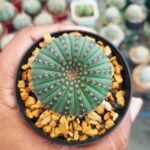

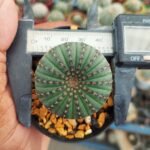
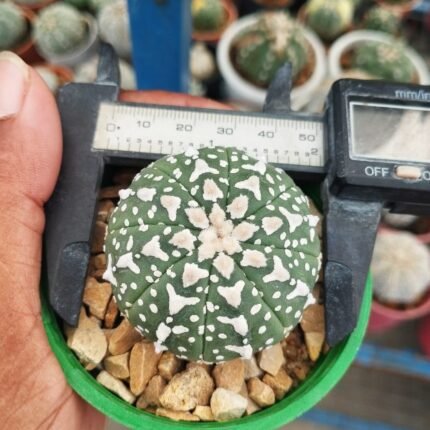
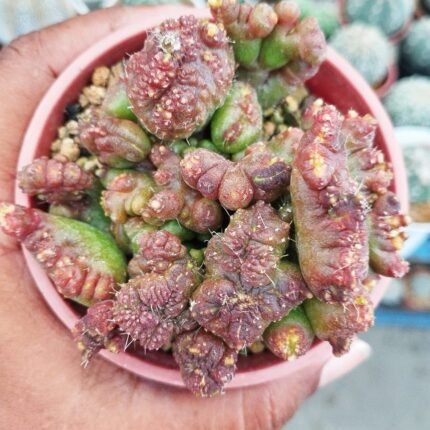
Frailea castanea
₹699.00 Original price was: ₹699.00.₹399.00Current price is: ₹399.00.
5 in stock
Description: Frailea castaneaSN|3523]]SN|3524]] (a.k.a. Frailea asterioidesSN|3524]]SN|3523]]) is a very singular miniature plant, and one the of most fascinating cacti with a disk like, flattened to globose body.
Stem: It is diminutive in size and several remain solitary, never outgrowing 4-5 cm diameter. Stems are chocolate brown or dark reddish-green with 8-15 flat ribs.
Spines: 3-15 minute, short, black spider-like, appressed on the plant body and usually all bent downward.
Flower: Sulphur yellow, sometimes larger than the plant itself (4cm diameter). But don’t be disappointed when the easily produced buds fail to open. Fraileas are cleistogamous meaning that their flowers produce seed without even opening. Without the need for pollination, hence the buds rarely reach full bloom and remain closed. They will open only in great heat in the hottest, brightest, afternoon sun, if at all.
Fruits: Dry indehiscent that detach easily, pericarp membranous, fragile that break easily releasing the seed.
Seeds: Very big 3-3,5 mm wide. The seed is shaped strangely for a cactus, and is often described as “hat” or “boat” shaped with a prominent edge. That is a good description, for it is among the few cactus seeds that float! They are thought to be dispersed in habitat by floating away on runoff.
Remarks: This plant is short living (It does not live long – about 10-15 years).
Notes: Seasonal growth and contraction. Frailea castaneaSN|3524]]SN|3524]], like many other diminutive cacti, such as, for instance, Turbinicarpus, Mammillaria, Rebutia, has a well-developed contractile tuberous root system. These tuberose roots have the function of storing enough sustenance so that plants can survive the periods of drought that they have to endure. Tuberous roots also have the function of anchoring the plants into the ground. The tuberose contractile roots continually pull the plants deeper into the ground as the stem elongates so the plants remain subterranean or at an appropriate level in the ground. Contractile roots are usually broad, fleshy, vertical, tapering, and very distinct of the fine absorbent roots and are capable of incredible effort. As commonly happens with tuberous-rooted cacti, in times of drought the plants lose water and shrink, the swollen root contracting and pulling the stem down, resulting in the top of the plant body lying level with, or sometimes even below, ground level. In most cases, contractile roots not only produce a strong pulling force, but also push away the substratum and create a soil channel in which plant movement is made easier. The fleshy contractile roots swell with moisture in the wet season creating a space in the substrate then during the dry season they leave an empty space in the substratum that allow plant movement with minimum or no resistance, at the same time the root dehydrates and shrinks vertically, drawing the plant down into the ground. This is repeated early permitting the top of the plant to remain constantly at the soil level or even completely under the soil level, and frequently the flowers push up through the dirt from the underground cactus body. In fact, even though these plants show a good amount of new growth each year, they hardly get any larger, and their dimensions remain unvaried year after year, as the individual stems tend to contract at the base. The new growth produced during the vegetative season compacts considerably and retracts sometime, pulling the plant down completely under the soil in the hottest months of summer and coldest months of winter. It should be noted that “when specimens are in this withdrawn state, it becomes difficult to find them in their natural state, even though their exact locality is known” This is especially true of the disciform, flat-bodied Frailea species such as Frailea cataphractaSN|3597]]SN|3597]], Frailea phaeodisca and Frailea castaneaSN|3524]]SN|3524]], which can be drawn completely below ground when dehydrated
Bibliography: Major references and further lectures
1) Edward Anderson “The Cactus family” Timber Press, Incorporated, 2001
2) James Cullen, Sabina G. Knees, H. Suzanne Cubey “The European Garden Flora Flowering Plants: A Manual for the Identification of Plants Cultivated in Europe, Both Out-of-Doors and Under Glass” Cambridge University Press, 11/Aug/2011
3)David R Hunt; Nigel P Taylor; Graham Charles; International Cactaceae Systematics Group. “The New Cactus Lexicon” dh books, 2006
4) Clive Innes, Charles Glass “Cacti” Portland House, 1991
5) Marlon C Machado. “Fascinating Frailea, Part 1: General impressions.” Cactus World (BCSS) Volume 25 No. 1 March 2007
6) Marlon C Machado.”Fascinating Frailea, Part 2: Review of the species from Rio Grande do Sul.” Cactus World (BCSS) Volume 25 No. 2 June 2007
7) Larocca, J., Machado, M. & Duarte, W. 2013. Frailea castanea. In: IUCN 2013. IUCN Red List of Threatened Species. Version 2013.2. <www.iucnredlist.org>. Downloaded on 12 March 2014.


 Cactus
Cactus Astrophytum Asterias
Astrophytum Asterias Gymnocalycium
Gymnocalycium Mammillaria
Mammillaria Other
Other Home Plant
Home Plant Succulent & Caudex Plant
Succulent & Caudex Plant Orchids & Air Plants
Orchids & Air Plants Lotus Plant
Lotus Plant Adenium Plant
Adenium Plant Combo Offer
Combo Offer Plant Media & Others
Plant Media & Others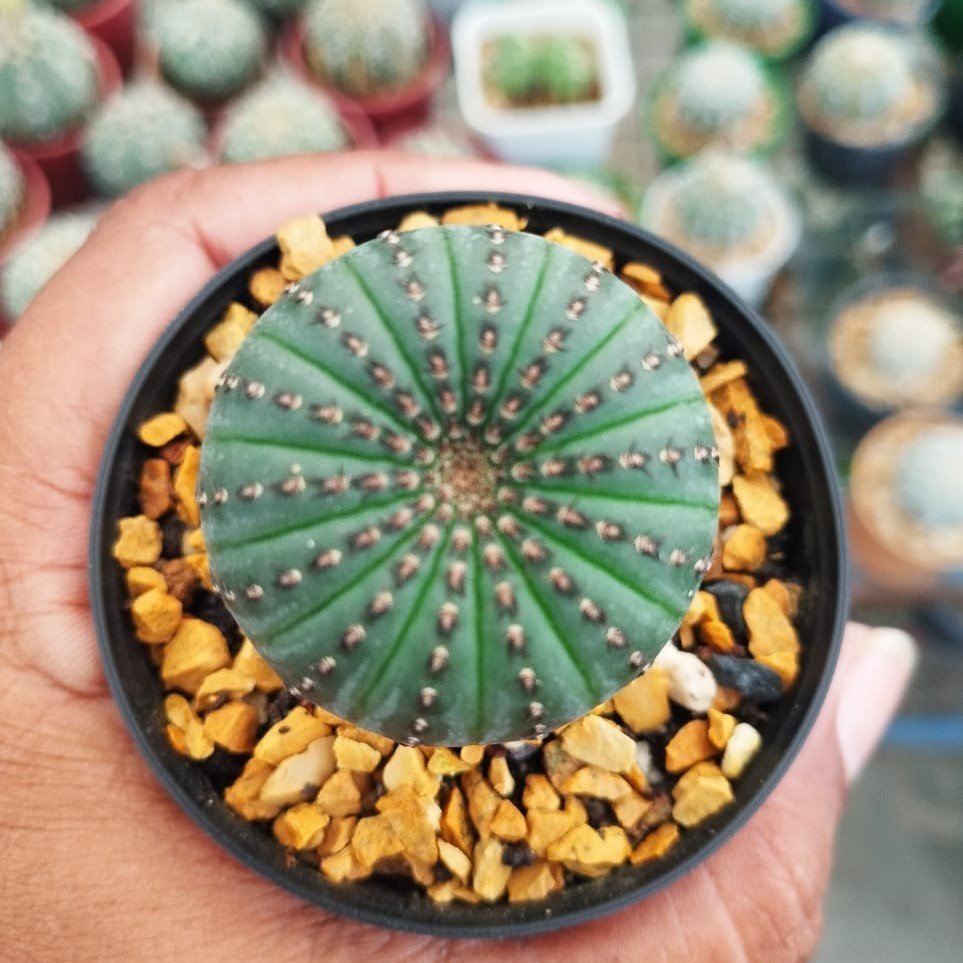
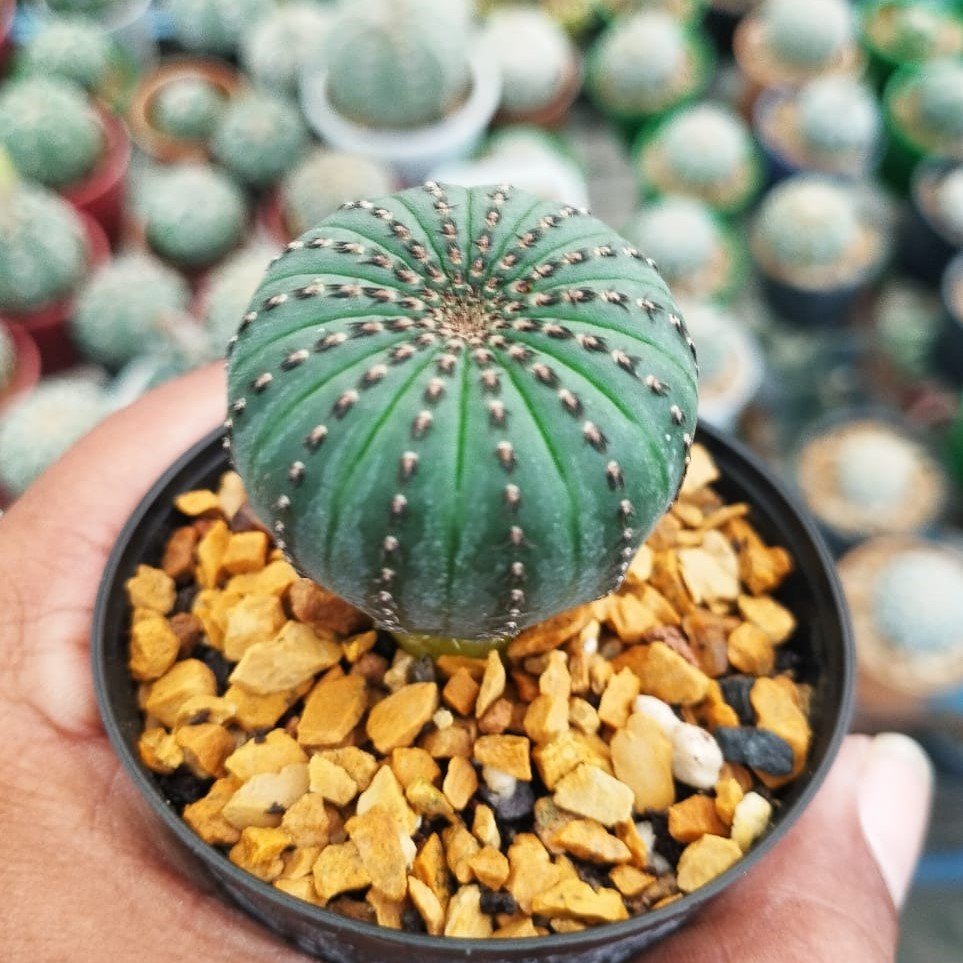
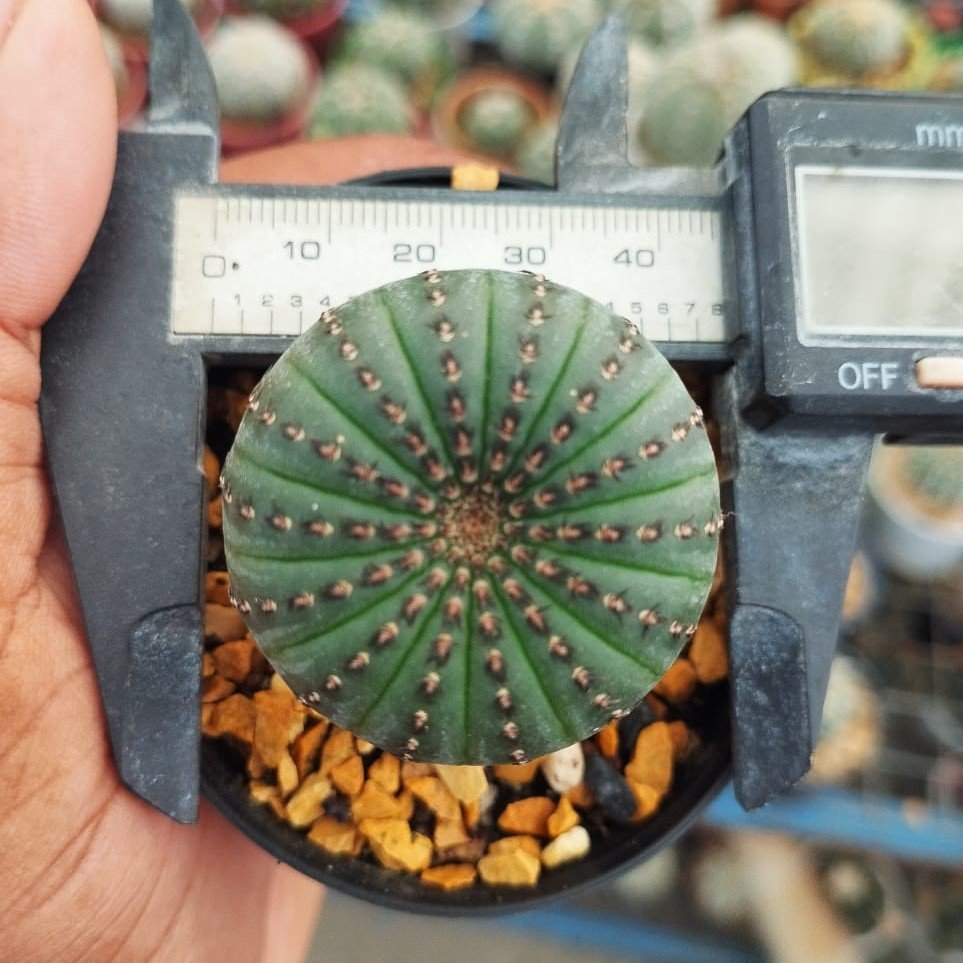
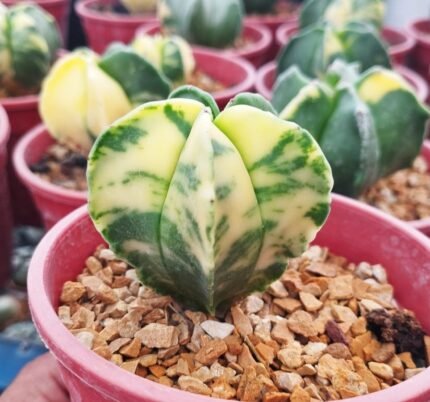
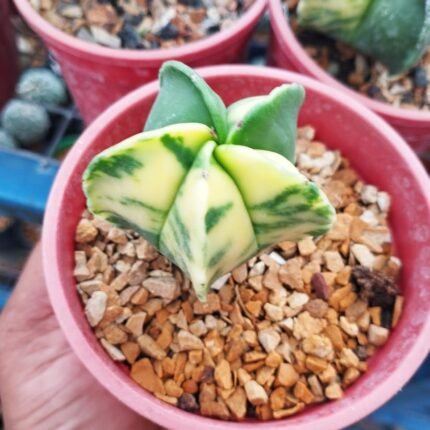

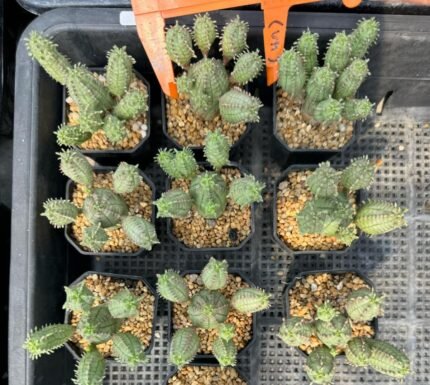
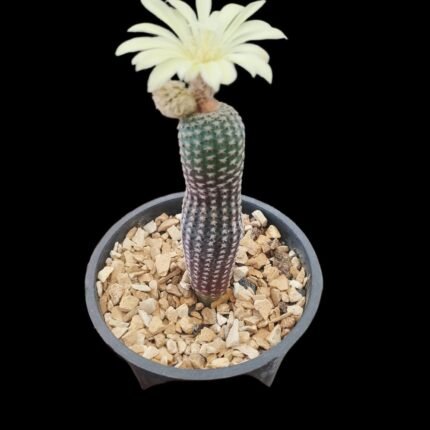
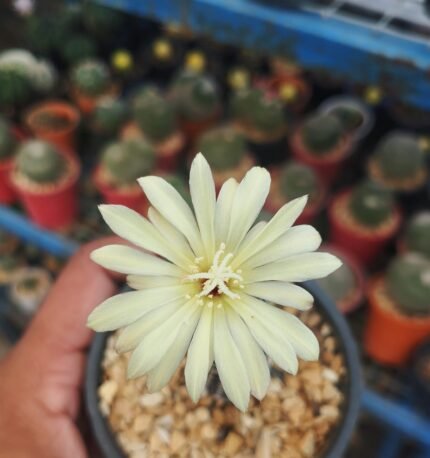


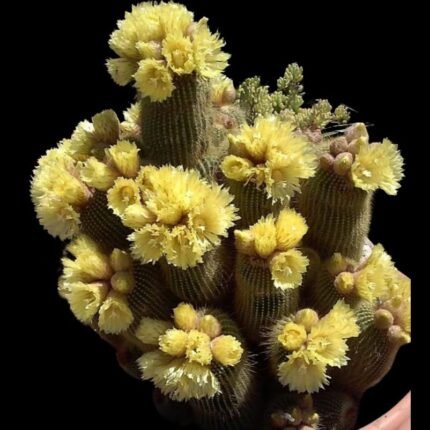
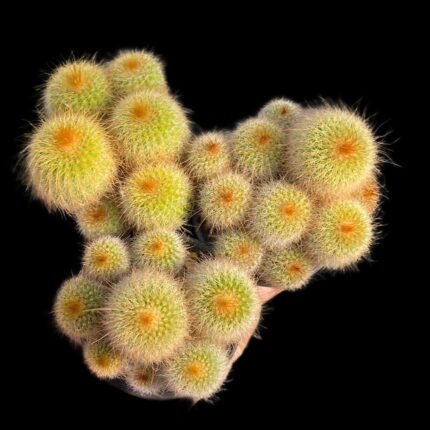
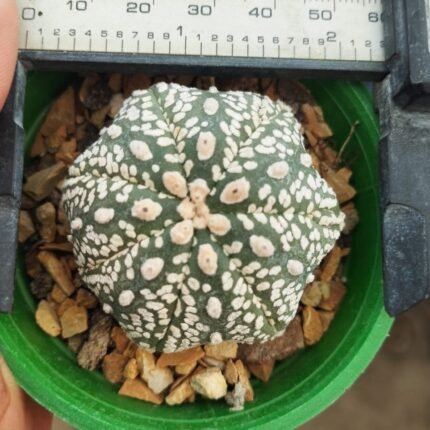
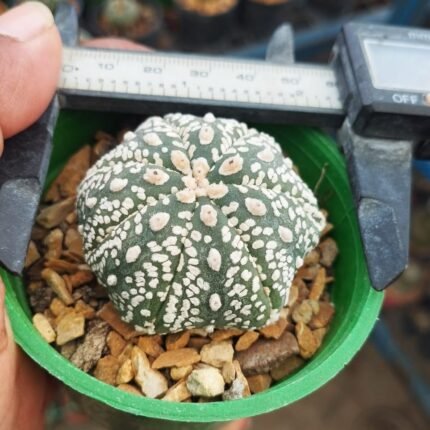
Reviews
There are no reviews yet.